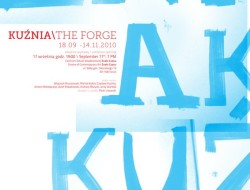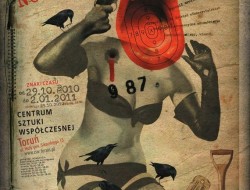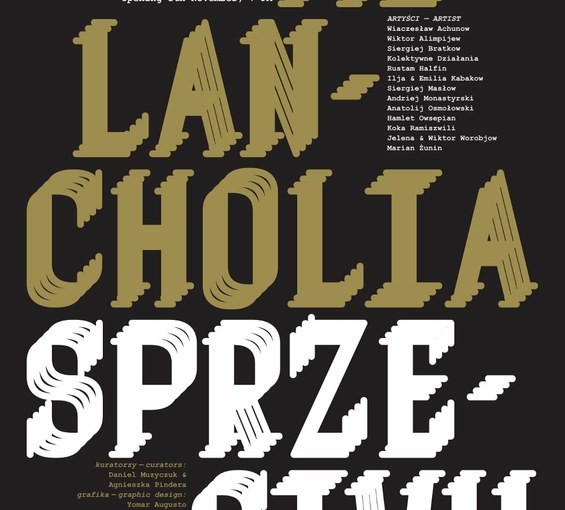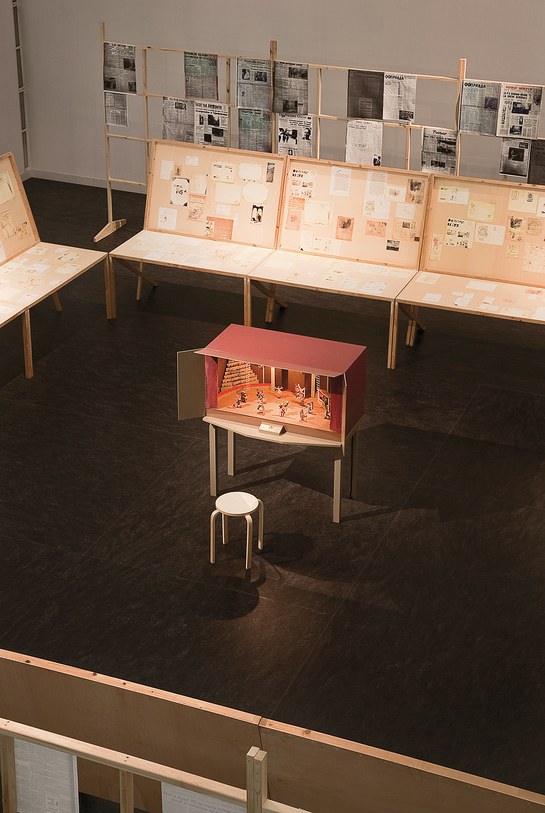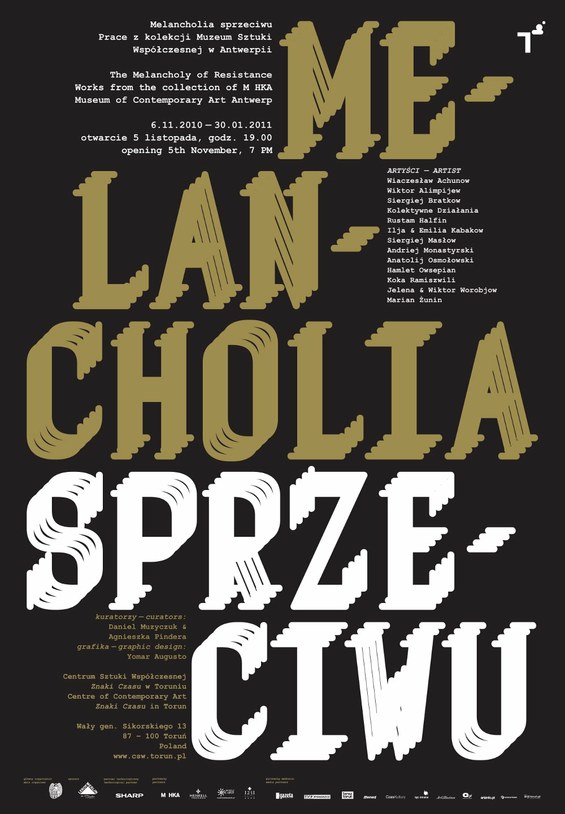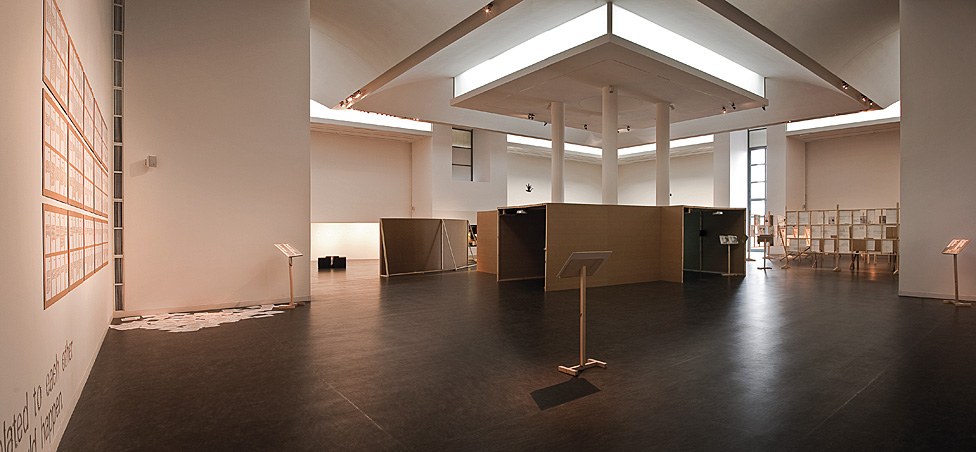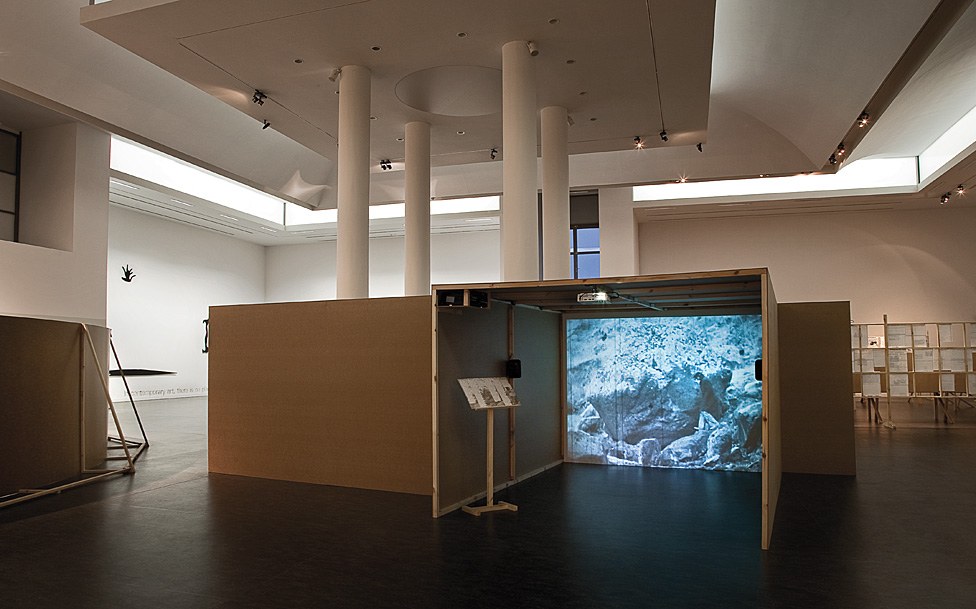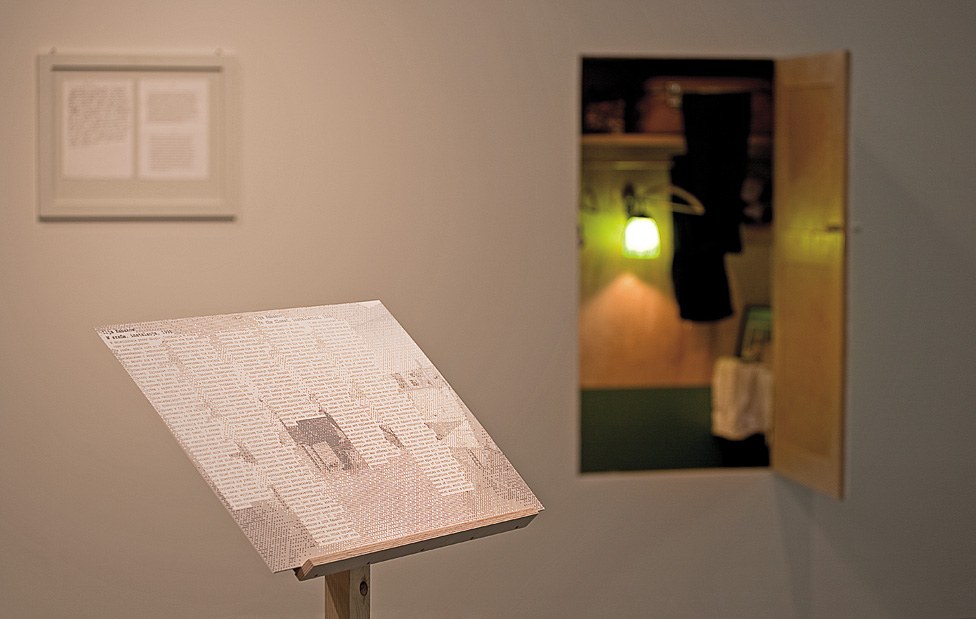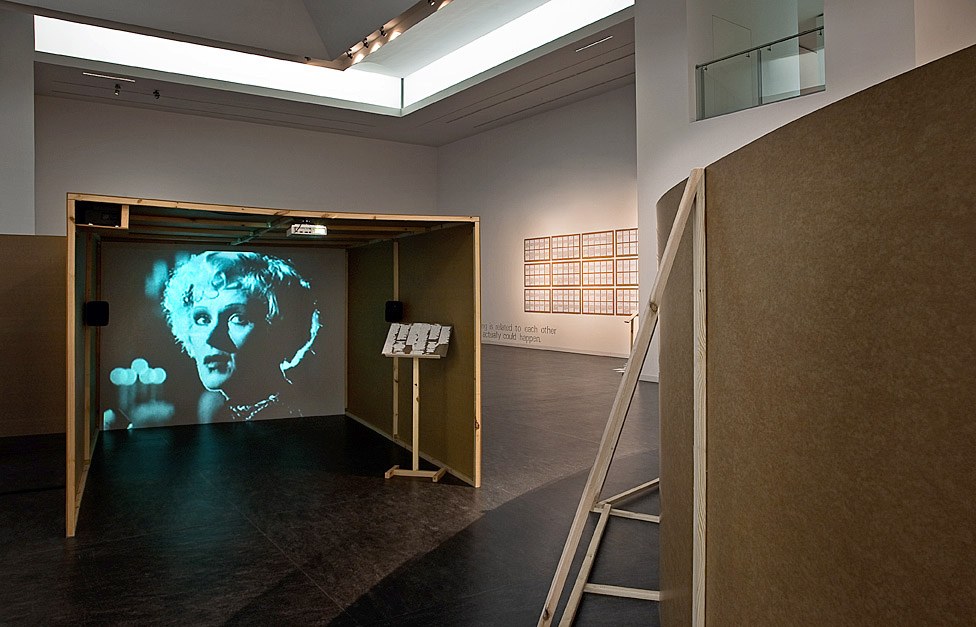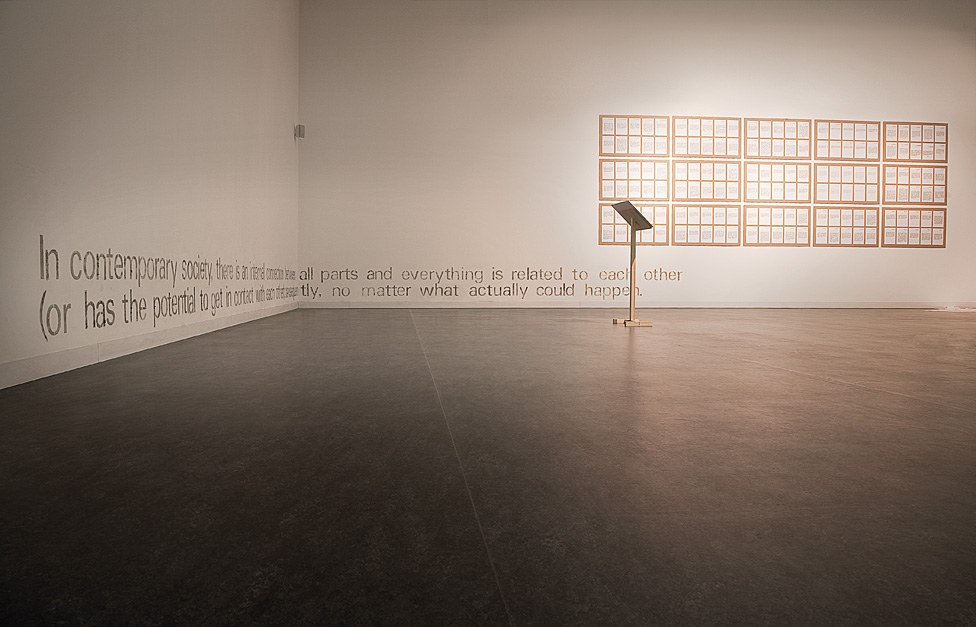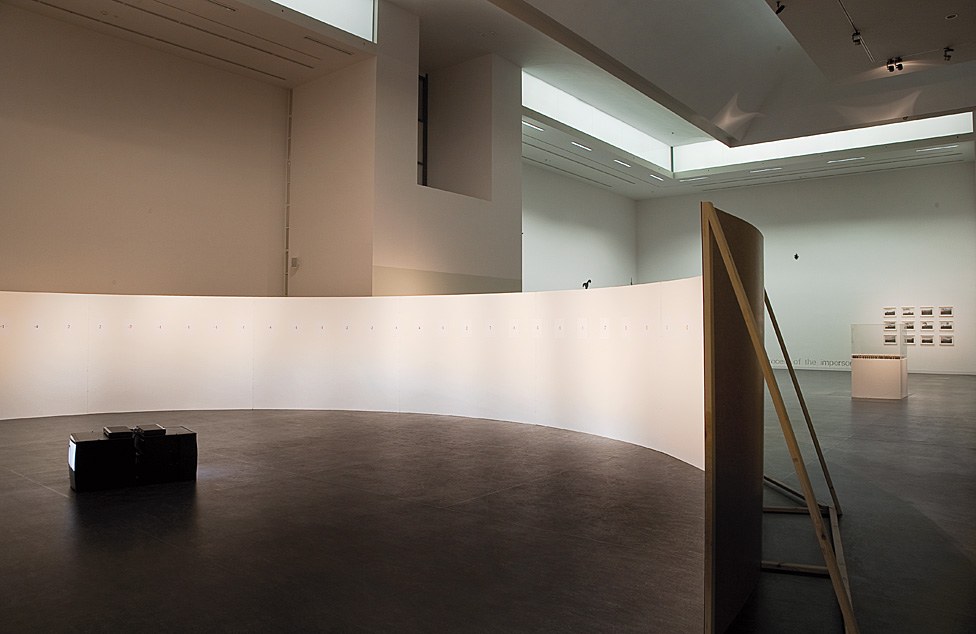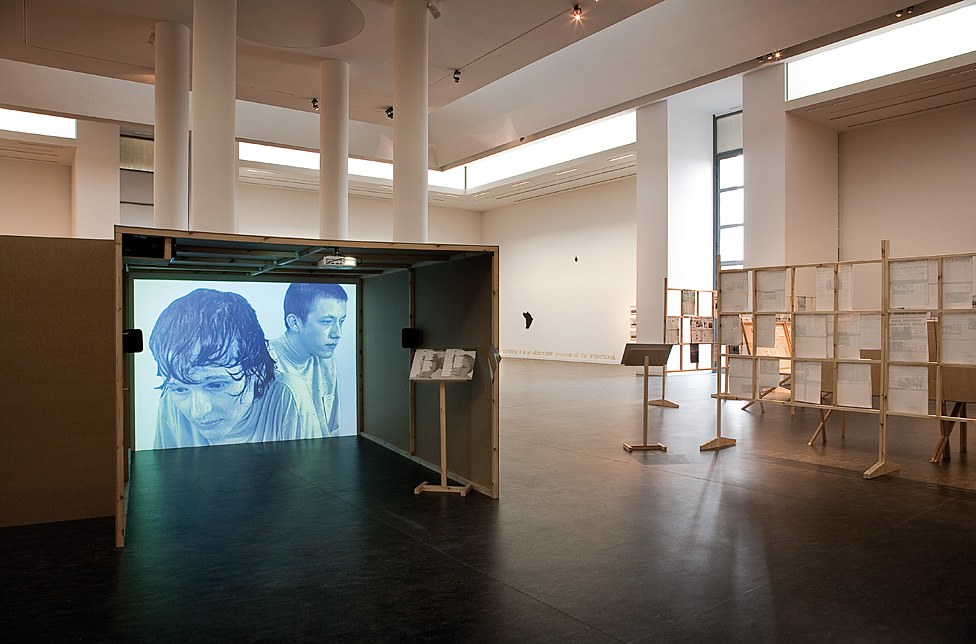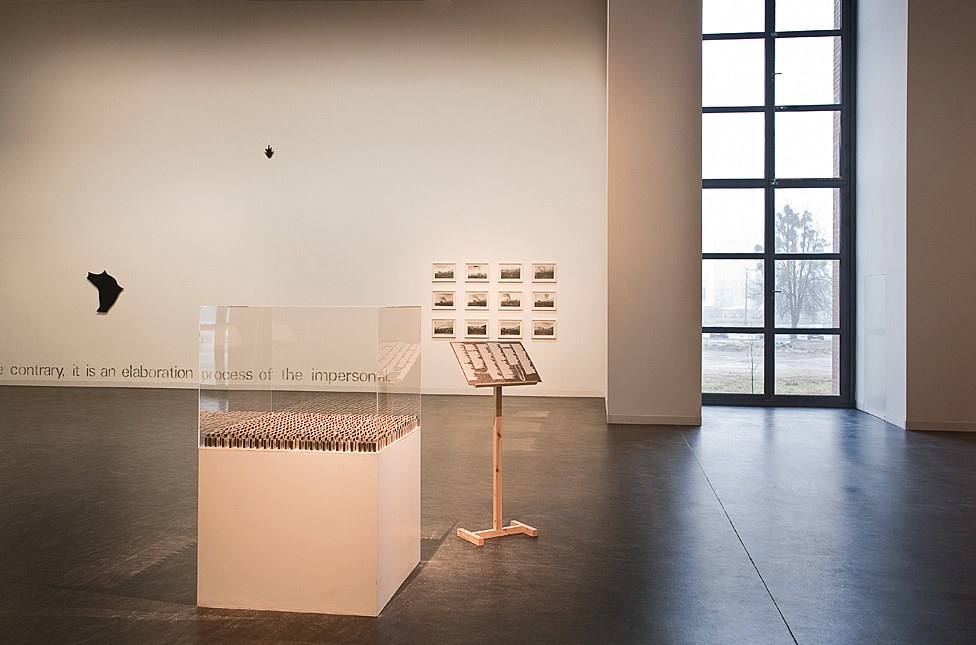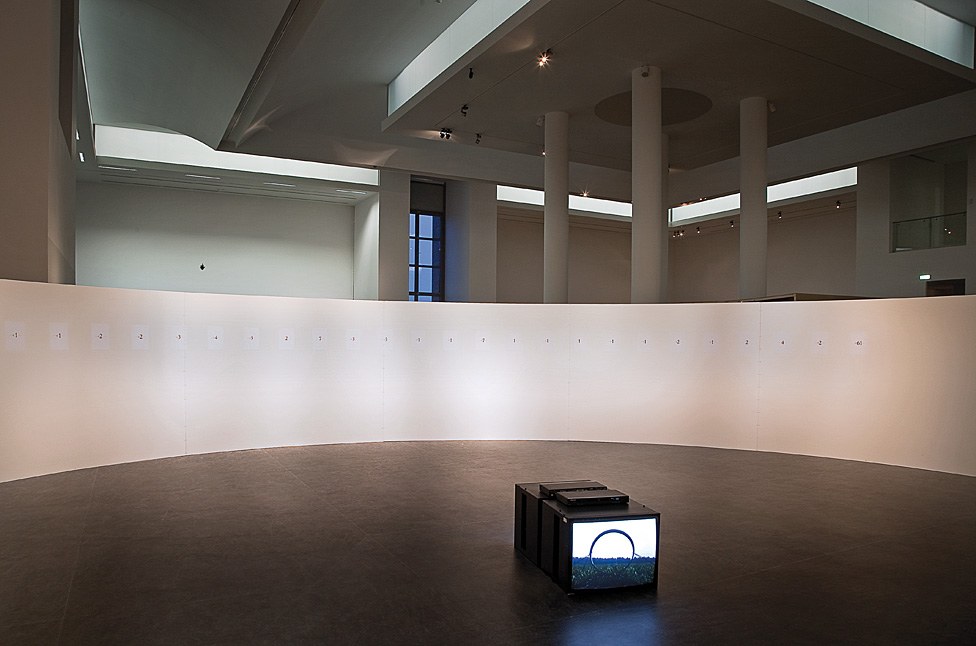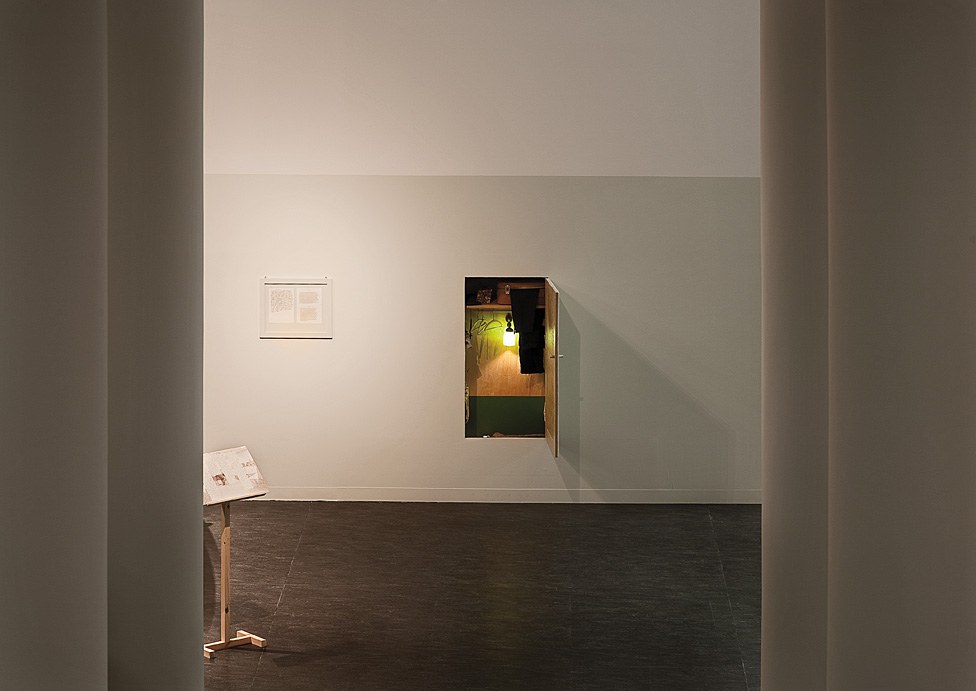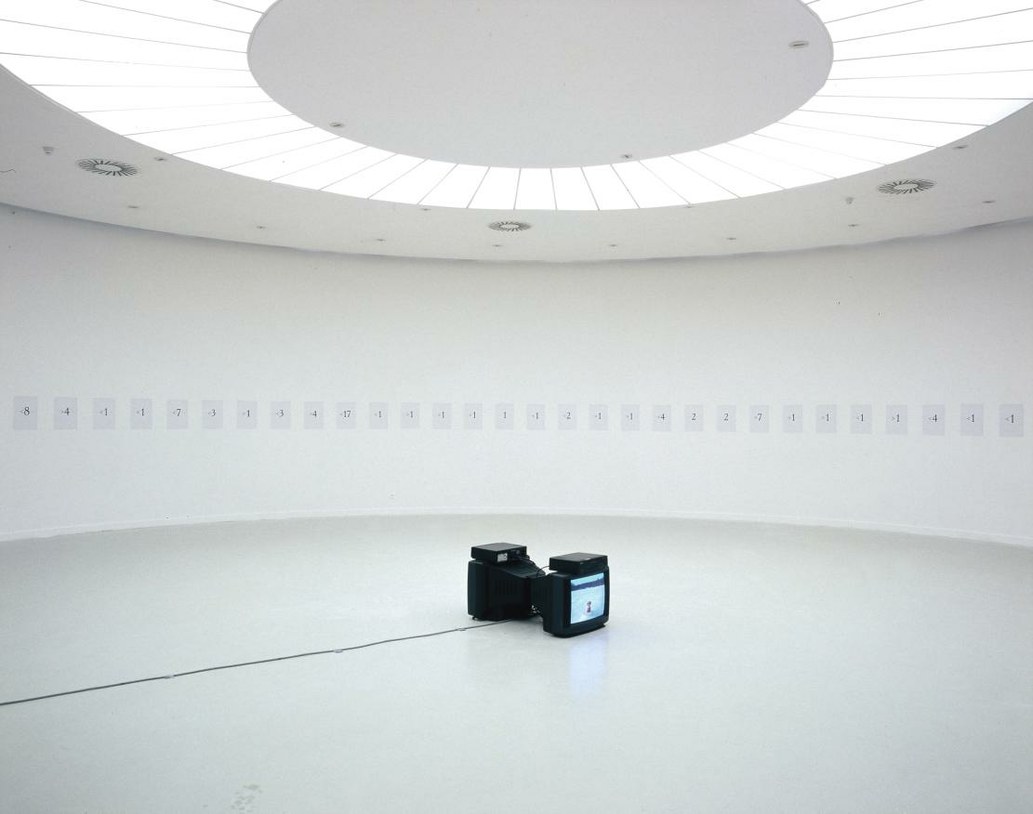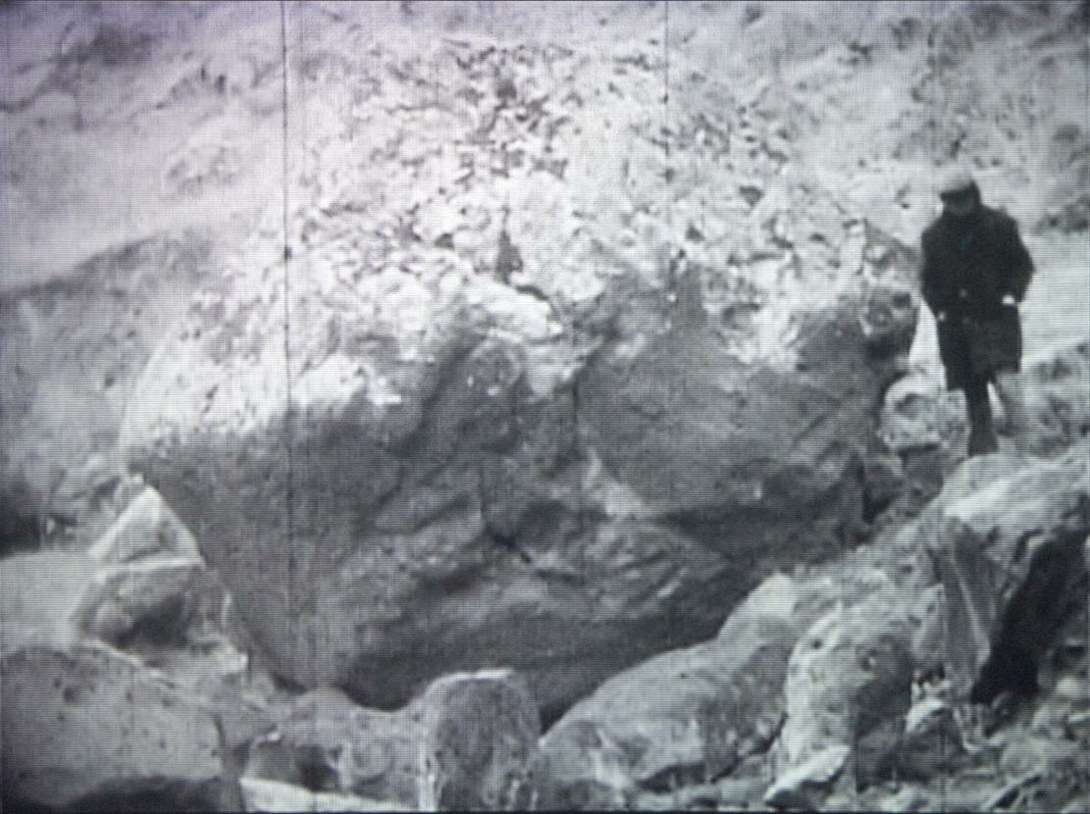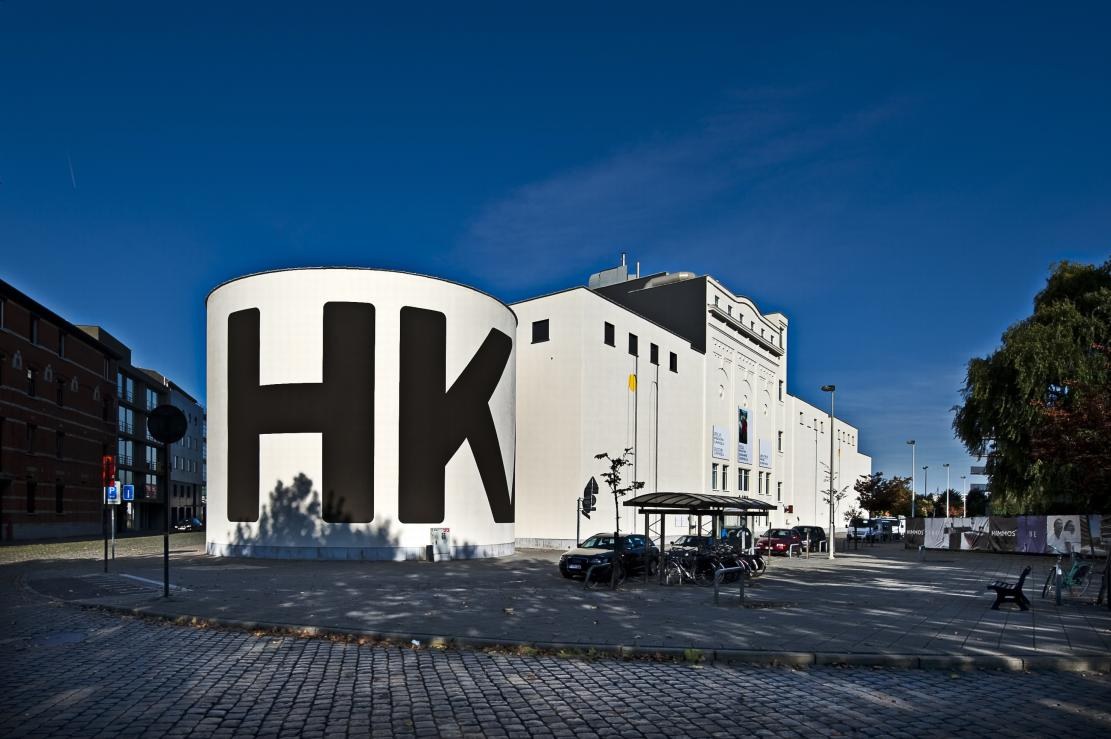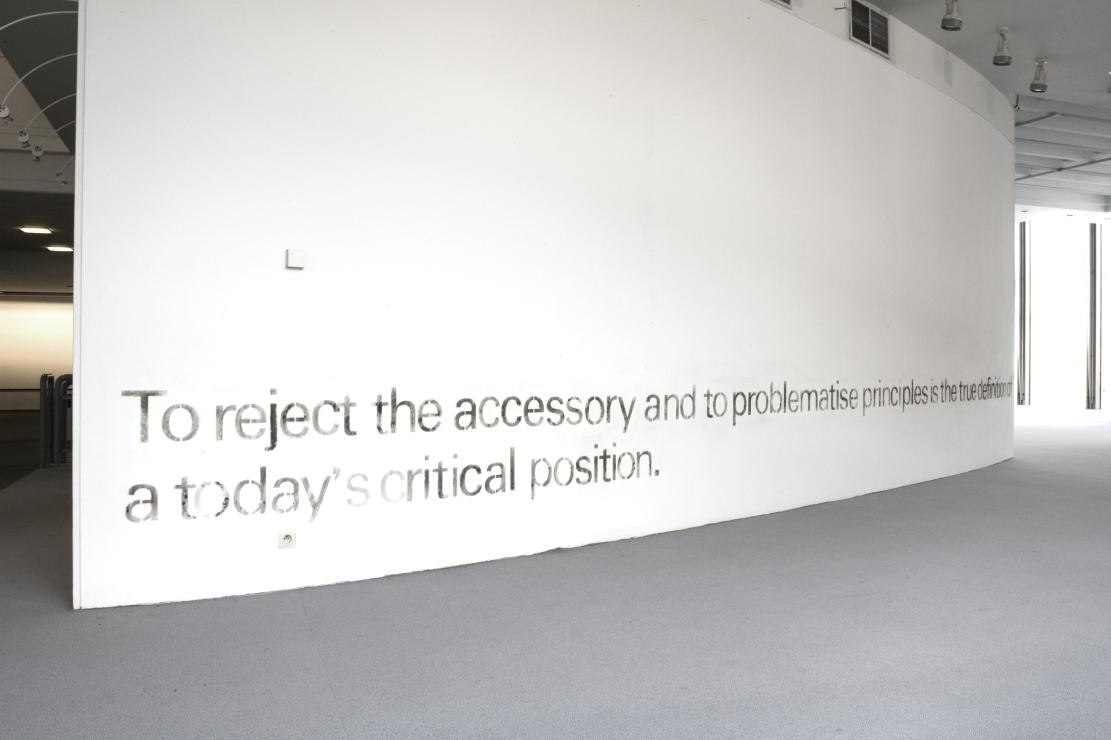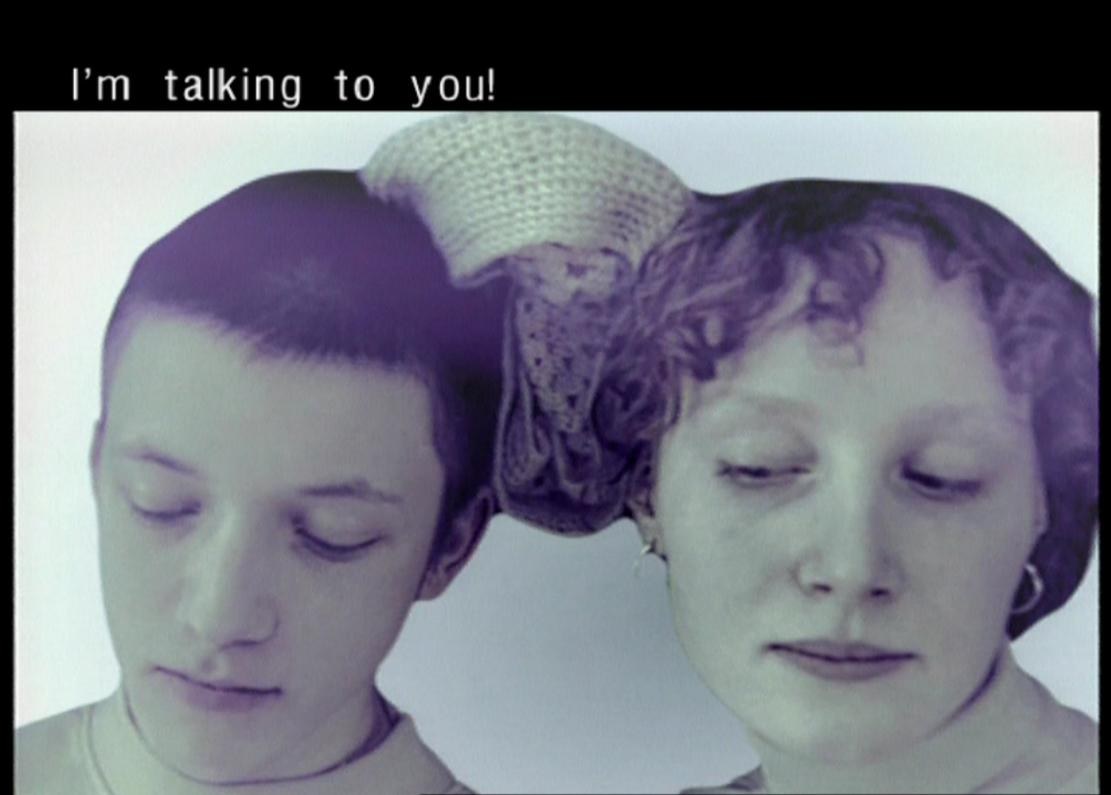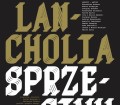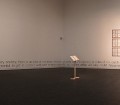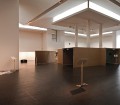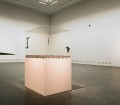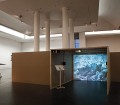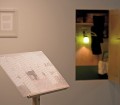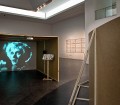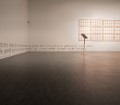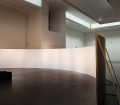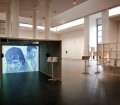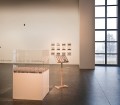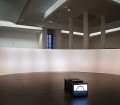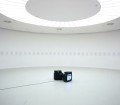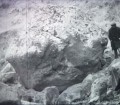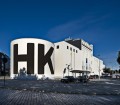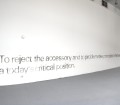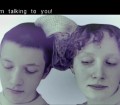artists: Vycheslav Akhunov,Victor Alimpiev, Sergey Bratkov, Collective Actions, Hamlet Hovsepian, Ilya and Emilia Kabakov, Rustam Khalfin, Sergey Maslov, Andrei Monastyrski, Anatoly Osmolovsky, Koka Ramishvili, Yelena and Viktor Vorobyev, Marian Zhunin
curated by: Daniel Muzyczuk & Agnieszka Pindera
graphic design: Yomar Augusto
The Melancholy of Resistance. Works from the collection of M HKA Museum of Contemporary Art Antwerp constitutes an attempt to acknowledge the voices of various private mythologies, after the fall of totalizing narratives. The exhibition presents a number of works by artists whom one might think of as parts of a social orchestra, but who adopt strategies of individual expression rather than carry out an enforced order. The space where the main part of the exhibition takes place is – on account of its construction and dimension – a natural space for dialogue and encounter. The exhibition provides the collection with a space through which its potentiality comes into play, revealing differences between the presented artistic strategies and attitudes.
THE MELANCHOLY OF RESISTANCE
The key to understanding the present is unearthing the past. However, according to Boris Buden our view of the Soviet period is distorted by the proceedings of the 1989 revolution and its outcome. It seems that through the modernising transformations, implemented to mantras of of national emancipation from the domination of communist bureaucrats, the belated bourgeois revolution would finally materialize. These events influenced the contemporary perception of the socialist past shared by the whole European continent. It is difficult to diagnose the spectre of communism, which seems to present itself differently to different communities. Thus rethinking the legacy inherited from the communist era is inevitable, a legacy that seems to be tacit and speechless, although there were many attempts to give it the floor. The fundamental categories for rethinking Communism might be both: collective practices that are characteristic of unofficial art before 1991, and discursive strategies of art after the fall of the Soviet Union. At the same time living in a forcefully designated communal space could be considered as a metaphor for the Soviet Union, a fictionally constructed space of co-existence between different republics and nations. One could actually view the whole Eastern block from this perspective. It is also crucial to consider the context produced by everyday life in this type of space, and the peculiar community which it produced. Victor Tupitsyn points to the communal speech typical for residents of communal apartments.
In 1978 Federico Fellini directed a film which tells the story of an orchestra rehearsal taking place in a renaissance chapel. The orchestra is accompanied by a television crew who constantly disturbs the work of the musicians, not allowing them to find the harmony so essential for their work. During the interviews conducted by the television crew, conflicts and repressed antagonisms become apparent, hostility towards the conductor grows. Anarchy sneaks into the disciplined ranks of the orchestra. A coup d’état takes place, accompanied by unexplainable throbs and a slow collapse of the edifice. Through an extremely powerful image Fellini was able to construct his most political film. Enclosed in a common space the musicians form a metaphorical nation and different social groups which are forced to negotiate their own interests. There are more examples of the relationship between music and social order, i.e. in 1968, when politically involved composers ventured to achieve change through music which could inspire social revolution. Cornelius Cardew’s composition The Great Learning is a good illustration of a procedure notated in a score that is – at the same time – the image of utopian social relations providing harmonic coexistence between all members of a social organism. And so in Paragraph 7, a part of this composition intended for amateur performance, we receive an enactment of the procedure of tuning, leading to a harmonious consonance of voices. In the beginning each of the performers sings in his or her own rhythm and pitch, regulated by the pace of breath. However each next word of the score has to be intoned in accordance with the pitch of a neighboring singer of the ‚orchestra’. The initial chaotic vocal multiplicity is transformed gradually over the one and a half hours of the performance into a splendid unison. The model described by Cardew can be easily applied to tusovka, a typical practice of the Russian art scene. According to Viktor Misiano: ‚Tusovka brings together the totality of people originally consolidated not by means of concrete structures – institutional or ideological – but through the prospect of their gaining. Tusovka is a type of artistic association which considers itself as pure potentiality. Tusovka is an artistic social project’.
WERCKMEISTER HARMONIES
The title of the exhibition was adopted from the title of László Krasznahorkai’s novel, The Melancholy of Resistance, which tells the story of a small Hungarian town, visited by a traveling circus. A massive container enclosing the world’s largest stuffed whale is placed in the middle of the town’s main square. The protagonist of the novel is postman János Valuska, whom the townspeople consider to be a halfwitted klutz, he becomes fascinated by the whale, who is however only seemingly the main attraction of the circus. A key figure is that of the so-called Prince, a part of the circus freak show. He speaks an unintelligible language and exercises an unexplainable power over people, who follow him from town to town. Another key character of the novel is a man named György Eszter, a retired music teacher, who renounces social life and never leaves his home anymore. He gives a monologue propounding a theory that Andreas Werckmeister’s harmonic principles are responsible for the aesthetic and philosophical problems in all music since, and need to be undone by a new theory of tuning and harmony. Immersed in melancholy Eszter searches for new ways of mending out of joint time through changing the rules of harmony.
Julia Kristeva tried to describe the state of melancholy. According to her, ‚Riveted to the past, regressing to the paradise or inferno of an unsurpassable experience, melancholy persons manifest a strange memory: everything has gone by, they seem to say, but I am faithful to those bygone days, I am nailed down to them, no revolution is possible, there is no future… ‚ The difference between melancholy and nostalgia, or mourning, lays in the type of loss. Melancholy is the feeling of loosing something one is not yet aware of. Kristeva also points to the fact that during times when either religious or political gods are toppled, one is especially prone to dark spirits. Periods of transformation, with their states of insecurity, result in a type of social anomia, in which no coherent norms and values, necessary for individuals to function, can be produced. This may lead to the emergence of such behavior as rebellion or withdrawal. Resistance is born when an individual, terrified by the unpredictable character of reality, creates his/her own space according to new rules. The individual trains his/her voice to provide testimony for the possibility of the existence of a different world. Just like Eszter, when he locked himself in his own house, searching for a new social and musical order within the confines of his space. He believed that discovering new rules of harmony, different from those of Werckmeister would lead to the birth of a new community.
The exhibition at the Centre of Contemporary Art in Torun proposes its own, original, method of music-therapy. As Dmitri Gutov writes in a text accompanying his Revolution Opera: ‚when you are singing your thoughts improvising, it is not quite the same as talking. The idea is formulated in a different way. Its rhythm is based on outside logic. Thus, sometimes a thing that would never come out in a prosaic statement slips out spontaneously.’
COLLECTION
Collecting is a narration, which actualizes itself into a new structure each time it is newly presented to the public eye. The story told by an exhibition can be a declaration of one’s beliefs, or a voicing of one’s concerns. The potentiality residing in a collection might bring out voices that can astonish not only the authors of particular works, but also the collector.
The Melancholy of Resistance is the third foreign collection being presented in CoCA in Torun. The first was the Thyssen-Bornemisza Art Contemporary Collection, the second – the Daros Latinamerica Collection.
M HKA ’s acquisition policy is intended to keep track of developments in contemporary art in a broad international perspective, particularly audiovisual work and ensembles of artists’ works. One aspect which in this respect is coming increasingly to the fore is a commitment related to the globalisation of the world, with ensembles of work from Eastern Europe, India, China, Morocco, and Central Asia and the Caucasus. The exhibition in Torun makes part of this commitment and focuses on that part of the M HKA collection that is oriented towards Post-Soviet Art. M HKA itself set up the project Europe at Large in 2010-2011 summarizing longstanding research on contemporary art in the post-Soviet space. Europe at Large supervised by M HKA director Bart De Baere and Russian critic and theorist Viktor Misiano focuses on Central Asia and Caucasus, two regions that were strongly isolated after the fall of the USSR. The project resulted in groundbreaking exhibitions and the acquisition by M HKA of a series of key works of artists from this region. The presentation in Torun is a selection of the works acquired in relation to the project Europe at Large and the formerly acquired works from Eastern Europe.
 The Institution is funded from the budget of Toruń Municipality
The Institution is funded from the budget of Toruń Municipality
